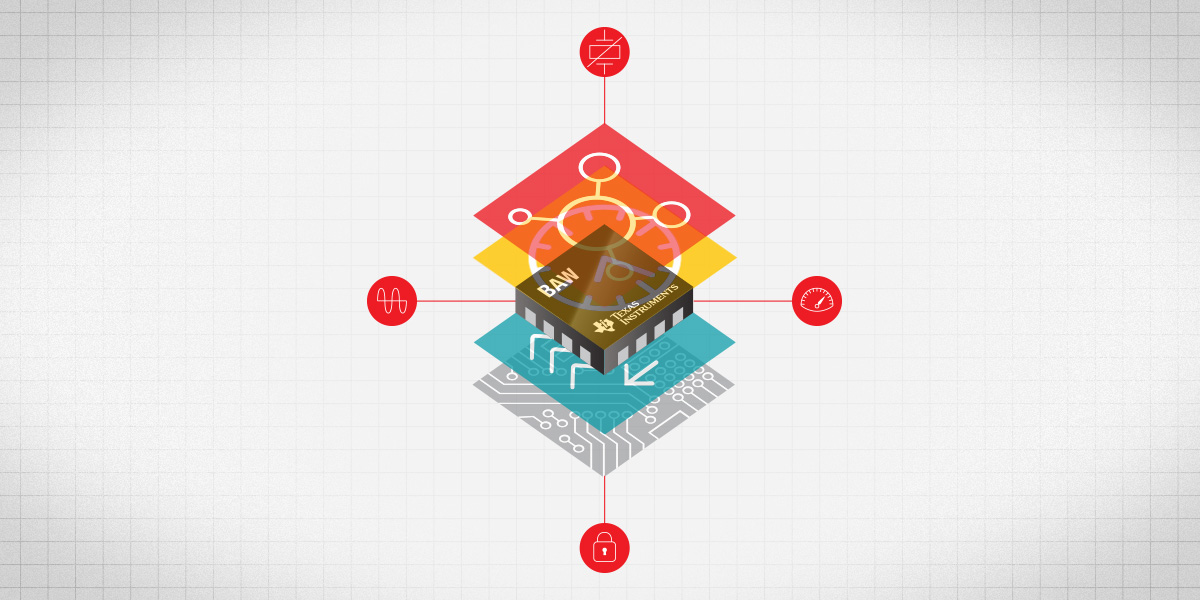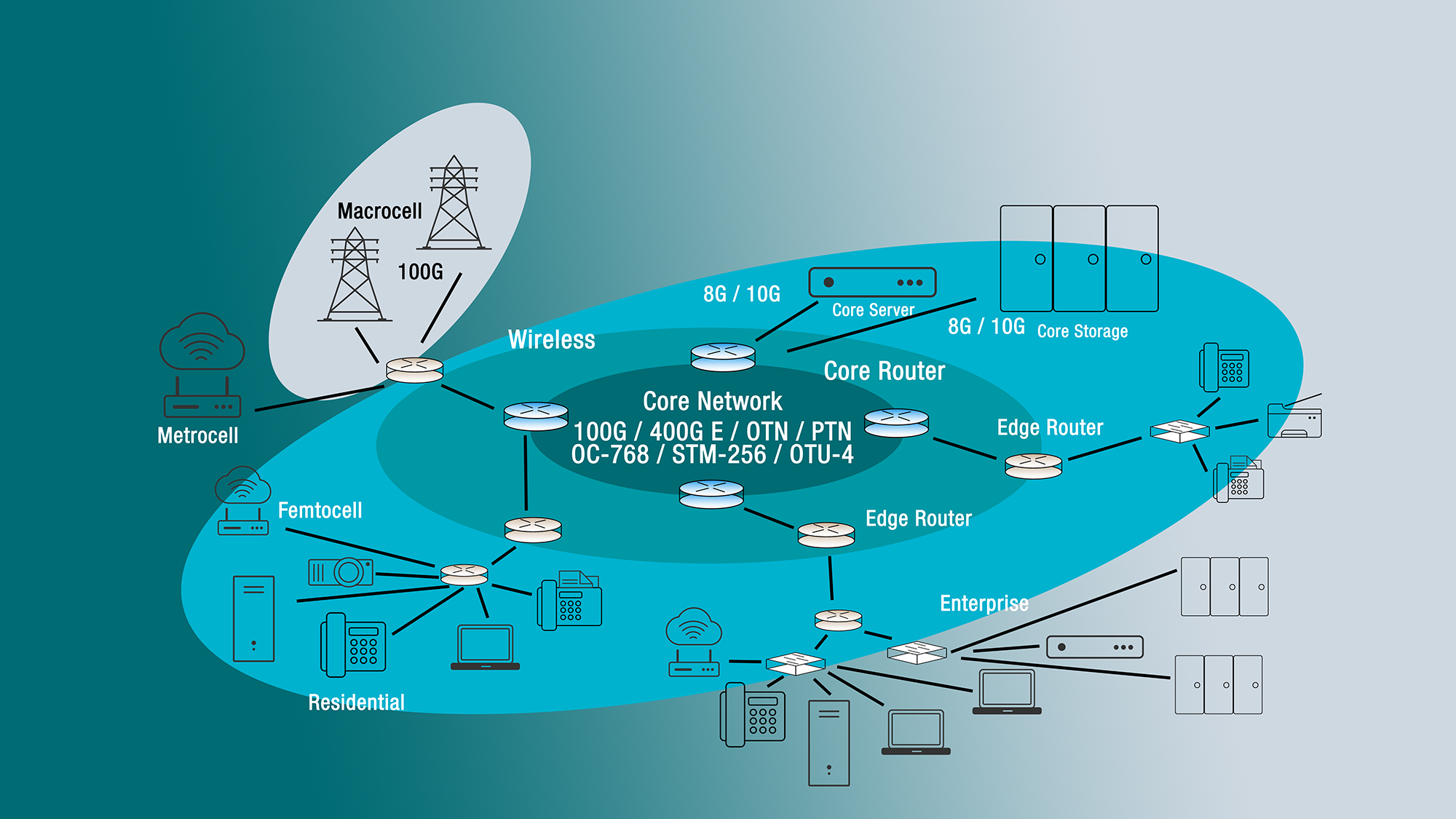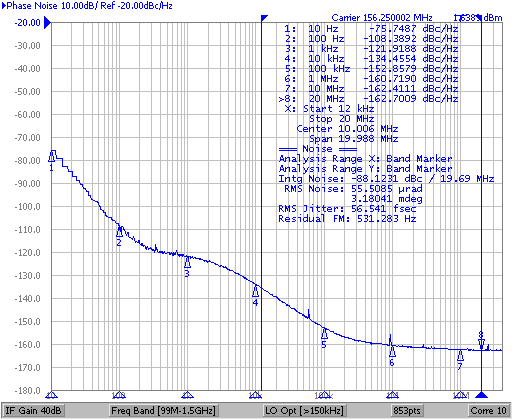SSZT526 february 2019 LMK05318 , LMK6C
The 5G revolution is around the corner. Whether it means faster, richer content in the form of seamless augmented and virtual reality experiences or technology that enables truly autonomous vehicles, it promises to inspire an array of innovations and new services.
Rapid development in the telecommunications industry is driving massive demand for higher bandwidth and faster data rates, requiring a serious network upgrade. The Ethernet backbone that transports information from end users to central core networks via a complex interconnection of switches and routers has seen a revolution of its own, from 10 Mbps through present-day speeds of 400 Gigabit Ethernet, and a look ahead to greater than 1 Terabit Ethernet.
At the heart of every 5G and 400-Gbps node is a semiconductor timing integrated circuit (IC) called a network synchronizer. This synchronizer ensures the accuracy of sampled information, leading to fewer bit errors and link impairments.
The breakthrough technology that helps achieve ultra-low jitter (noise) on the output clocks from these network synchronizers is called a bulk acoustic wave (BAW) resonator.
| TI BAW Resonator Technology for Clocking | |

|
See how TI's bulk acoustic wave clocking technology lowers jitter and simplifies designs in next-generation communications systems. |
Figure 1 shows the packet-switched telecommunications network ecosystem that comprises the 5G wireless infrastructure and 400-Gbps switches and routers that transport data between the network edge and its core.
 Figure 1 Packet-switched
Telecommunications Network
Figure 1 Packet-switched
Telecommunications NetworkA BAW resonator is a high-quality-factor (high-Q) resonator that replaces a traditional inductor-capacitor oscillator commonly found in network synchronizer ICs. It is a thin-film resonator similar to a quartz crystal, sandwiched between metal films and other layers to confine the mechanical energy. The result is a high-Q, ultra-low-noise resonator that achieves unrivaled performance.
Let me explain why this performance is so critical for 5G and 400-Gbps networks.
400-Gbps transceivers use a four-level pulse-amplitude modulation (PAM-4) scheme to transmit data. This data modulation scheme enables higher data rates over the same bandwidth compared to traditional non-return-to-zero modulation schemes. 400-Gbps standards like the Optical Internetworking Forum Common Electrical Interface and Institute of Electrical and Electronics Engineers 802.3bs have very stringent transmit jitter requirements for PAM-4 transmitters, allocating only a small portion of the overall transmitter jitter to the network-synchronizer-generated reference clock.
Switch application-specific IC vendors with 56G PAM-4 serializer/deserializer (SerDes) solutions require a maximum integrated reference clock jitter of 150-fs root mean square (RMS) over a frequency band of 12 kHz to 20 MHz. Network synchronizer clocks that feature TI BAW resonator technology, such as the LMK05318, typically have integrated RMS jitter (12 kHz to 20 MHz) numbers of less than 60 fs (156.25-MHz carrier), as shown in Figure 2. This level of performance can help designers future-proof their systems.
 Figure 2 156.25-MHz Output Clock from
the LMK05318 Network Synchronizer Clock
Figure 2 156.25-MHz Output Clock from
the LMK05318 Network Synchronizer ClockNow, in regards to radio in 5G applications, the 5G New Radio standard specifies new frequency bands below 6 GHz and extends into millimeter-wave frequencies. While sub-6 GHz is a progression of existing Long Term Evolution (LTE)-Advanced capabilities, the real challenges lie in millimeter wave designs, where more contiguous bandwidth is available for transporting a large amount of data. Reference-clock impairments (such as phase noise) can cause distortion in the modulated signal, which becomes problematic at the higher frequencies and wider bandwidths characteristic of millimeter-wave designs.
Signal quality is characterized by the system’s error vector magnitude, to which the phase noise of the reference clock is a primary contributor. As denser modulation schemes are planned for 5G (from 256 quadrature amplitude modulation [QAM] currently, up to 1,024 QAM in the future), the requirements on error vector magnitude become more and more stringent. A low-noise reference clock from the network synchronizer is thus critical to ensuring optimal system performance.
I hope that I have sparked some curiosity about BAW resonator technology and emphasized the value proposition of the best-in-class performance that it has to offer for current and future systems.
Additional Resources
- Learn more about TI BAW resonator technology in our blog, "Tiny technology, global impact: TI BAW resonator breakthrough creates new electronic heartbeat."
- Read the white paper, "TI BAW technology enables ultra-low jitter clocks for high-speed networks.”
- Download the application note, “Clocking high-speed 56G PAM-4 serial links with the LMK05318.”
- Discover the road to 5G in the whitepaper, "Preparing for a 5G world: An overview of the enabling technologies and hardware requirements."